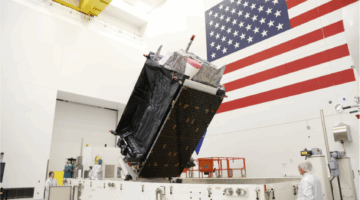
WASHINGTON: Despite skepticism in Congress, Air Force Special Operations Command will launch a series of demonstration flights of it’s much-anticipated Armed Overwatch aircraft this year, hoping lawmakers see the value in a light, deadly airplane aimed at counterterrorism missions.
Several different aircraft will go through testing with an eye toward buying one of them in 2022, AFSOC commander Lt. Gen. James Slife said Tuesday.
“I think we can do that at relatively low risk, based on what we’ve seen from the vendors who have indicated that they intend to bring platforms to demonstrate for us in the coming months,” he said.
The planes, all based on commercial designs that can be purchased relatively quickly, would focus on surveillance, bombing, and close air support missions targeting terrorist groups in hard-to-reach in Africa and other places where American special operations forces operate on small footprint missions.
With tight budgets expected in coming years, and special operations forces expected to play a key role in western Africa, Somalia, Afghanistan and other simmering hotspots in Asia, AFSOC has said it can’t always count on the Air Force and Navy to supply jets to keep watch overhead.
Speaking at a discussion hosted by the Mitchell Institute, Slife said the demonstrations in the coming months would provide lawmakers with more information about the program. They blocked $101 million in funding to buy the first five of a planned 75 planes in the 2021 budget.
He didn’t give an indication which planes are in the running, but suggested “if it is non-developmental and it meets the requirements that SOCOM has laid out to industry, then we’re interested in looking at it.” He added he’s “cautiously optimistic” members of Congress would see value in the program, which aims to replace the currently aging fleet of U-28 aircraft in AFSOC’s inventory.
Slife underscored that he isn’t looking for a high-speed, high-cost aircraft for these missions. In Iraq and Afghanistan, the US would often stack fighters, bombers, drones and refueling aircraft over the battlefield, something which isn’t going to happen for small, light-footprint missions in Africa.
Instead, he’s looking for “a multirole airplane that’s capable of operating with a very light logistics footprint in small, disaggregated teams in very austere regions.”
The budding program would be less expensive to operate than the U-28 currently being flown, Slife said. “It will be more versatile than the U-28, and frankly, we’ll have greater capacity to operate in those small disaggregated kinds of teams.”
The Pentagon has made competition with China and Russia it’s number one priority in recent years, as it invests in keeping parity with the advances those countries are making in seapower, hypersonics, and precision weapons. But Washington is also heavily invested in keeping small teams of special operators active and effective across the globe. Those teams rely on a variety of small, fixed-wing aircraft to provide another layer of surveillance and quick-strike capability when they’re in the field.
“The whole reason we’re doing this is because the National Defense Strategy talks about the need to do cost effective [counter-terrorism] operations, cost-effective irregular warfare,” Slife said. “So the operating environment where we currently operate U-28s is about the same operating environment where we would envision operating armed overwatch platforms.”

